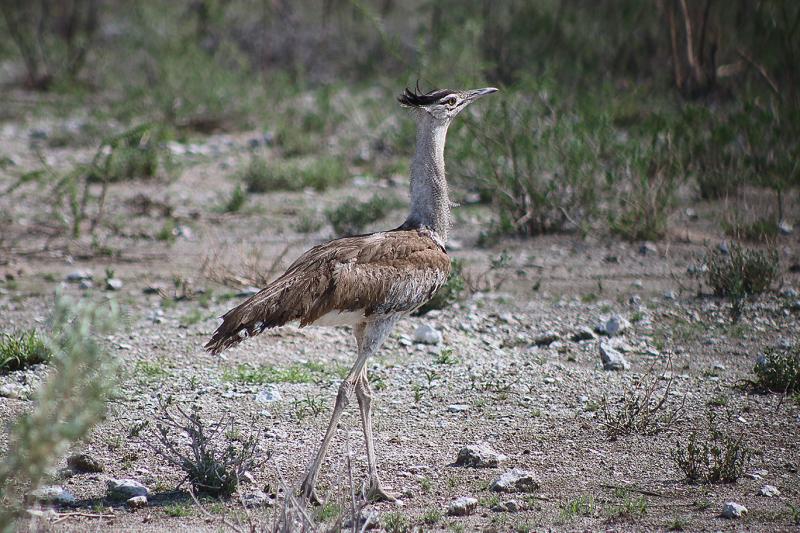Introduction
A broad range of ecosytems that stretch from moorland and mountains to African savannah. A common feature is a lack of forest although shrubs and isolated trees feature and there may well be riverine woodland. Birds are often "terrestrial", in other words, ground foragers and nesters, although some choose the trees that are available for their nesting sites.

Kori Bustard
The kori bustard is a typical example of a bird adapted to life in the African savannah. It prefers sandy, semi-arid ground with some shrubs and small trees for cover. Note the subdued browns and greys of the adult that provide good camouflage. This male was photographed in Etosha National Park, Namibia.
Feeding
It is a terrestrial omnivore that forages on the ground for berries and seeds and insects, reptiles and small mammals.
Breeding
The nest is a scrape in the ground and the female lays two well camouflaged eggs. The male has several mates and takes no part in incubating the eggs or in rearing the chicks which are "precocial" - they are born able to see with feathers and able to run within a few hours of birth - good survival adaptations for vulnerable ground nesting birds.
Wildfile Special
- The male kori bustard is 30% bigger than the female and the largest, heaviest flying bird in Africa although you are unlikely to see the bird in flight.